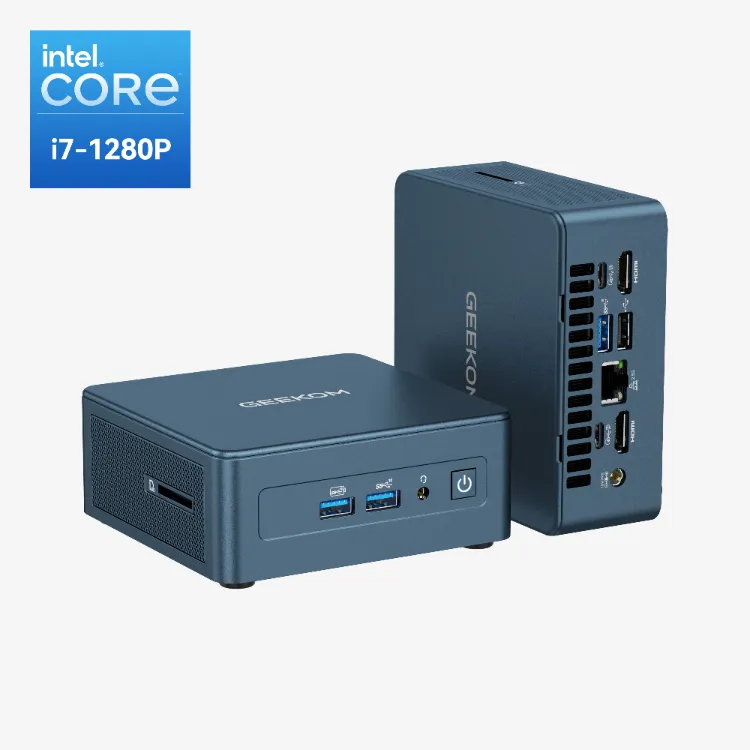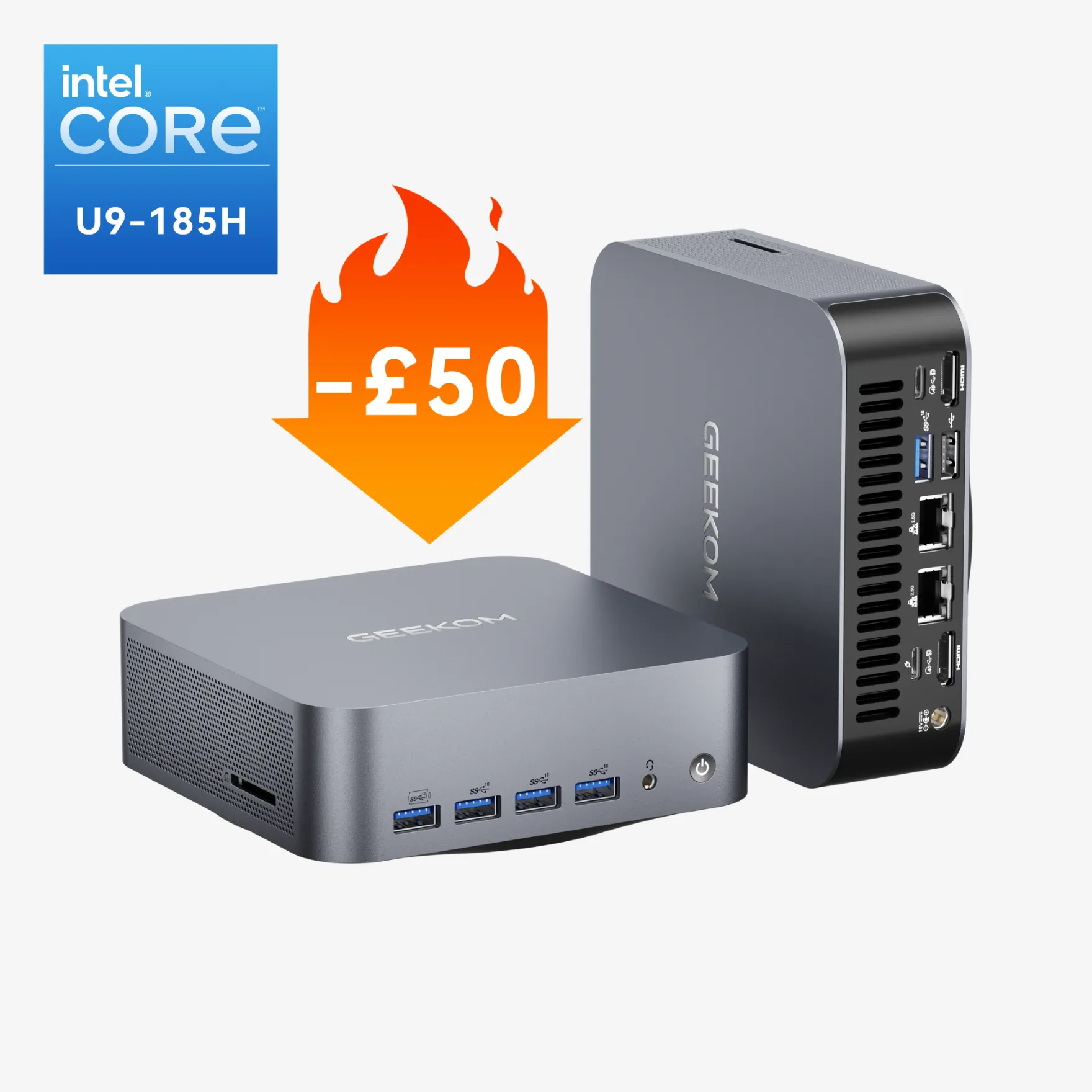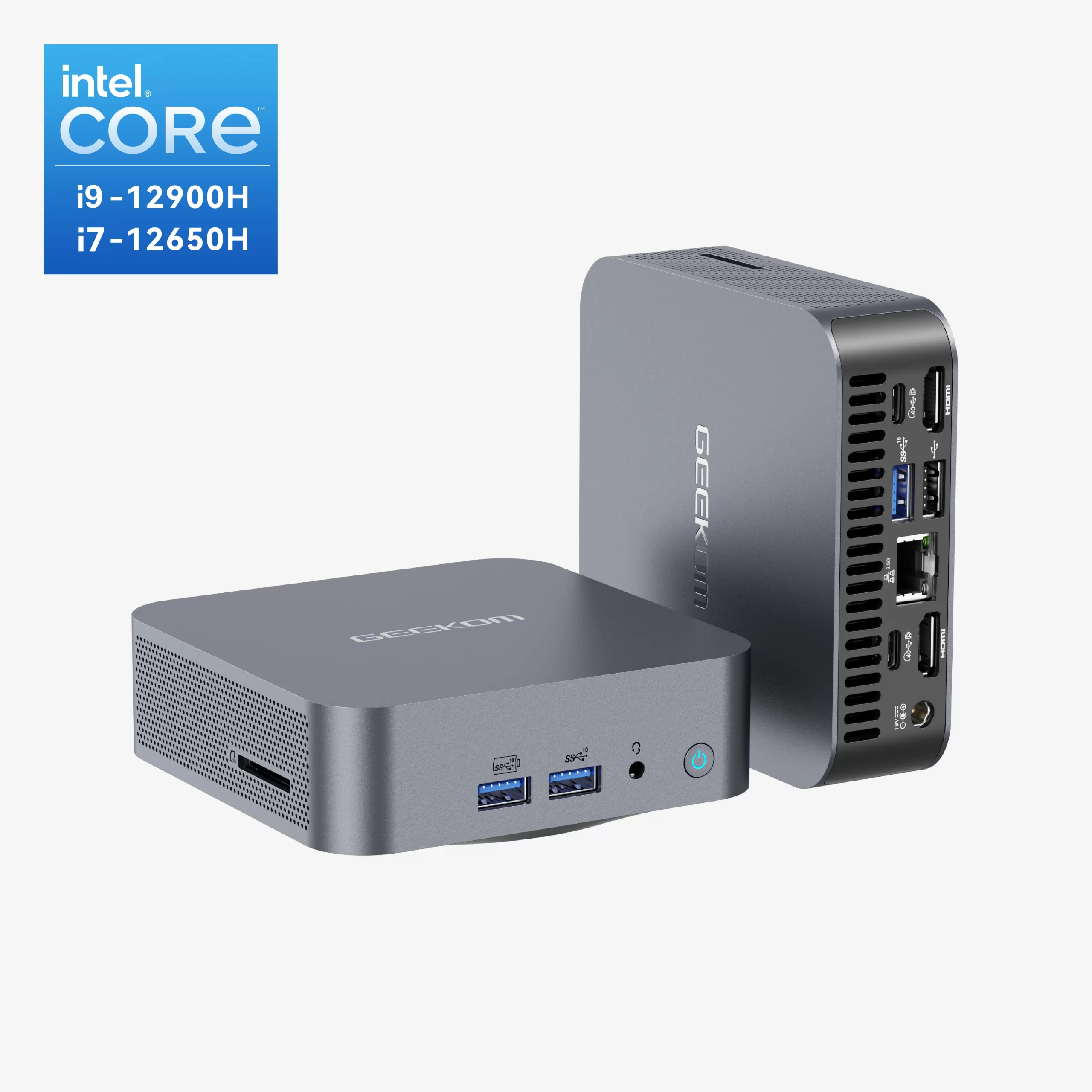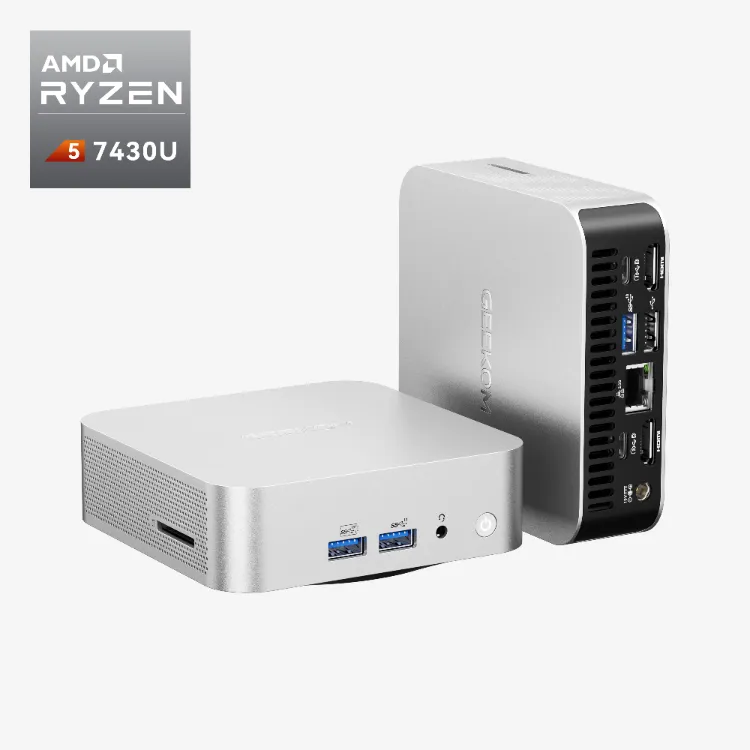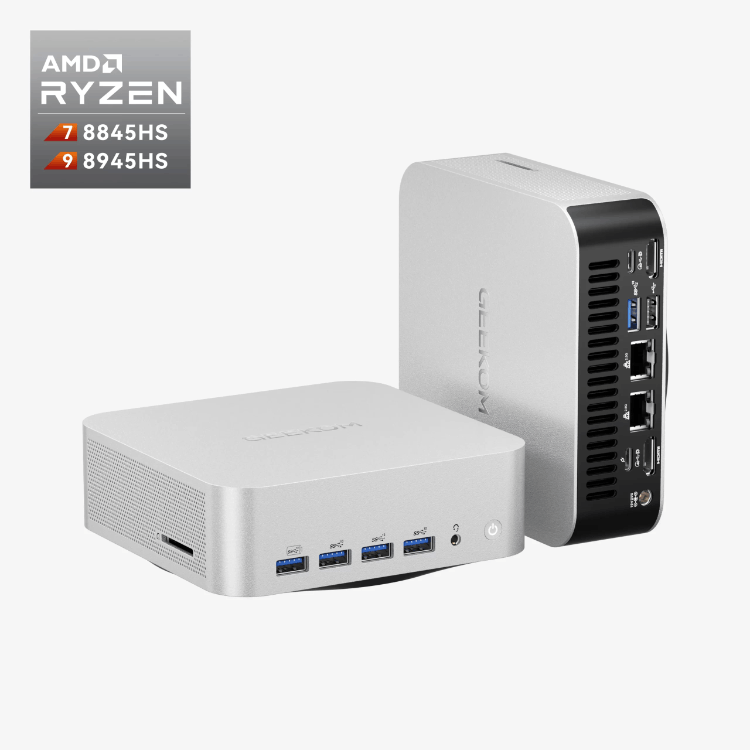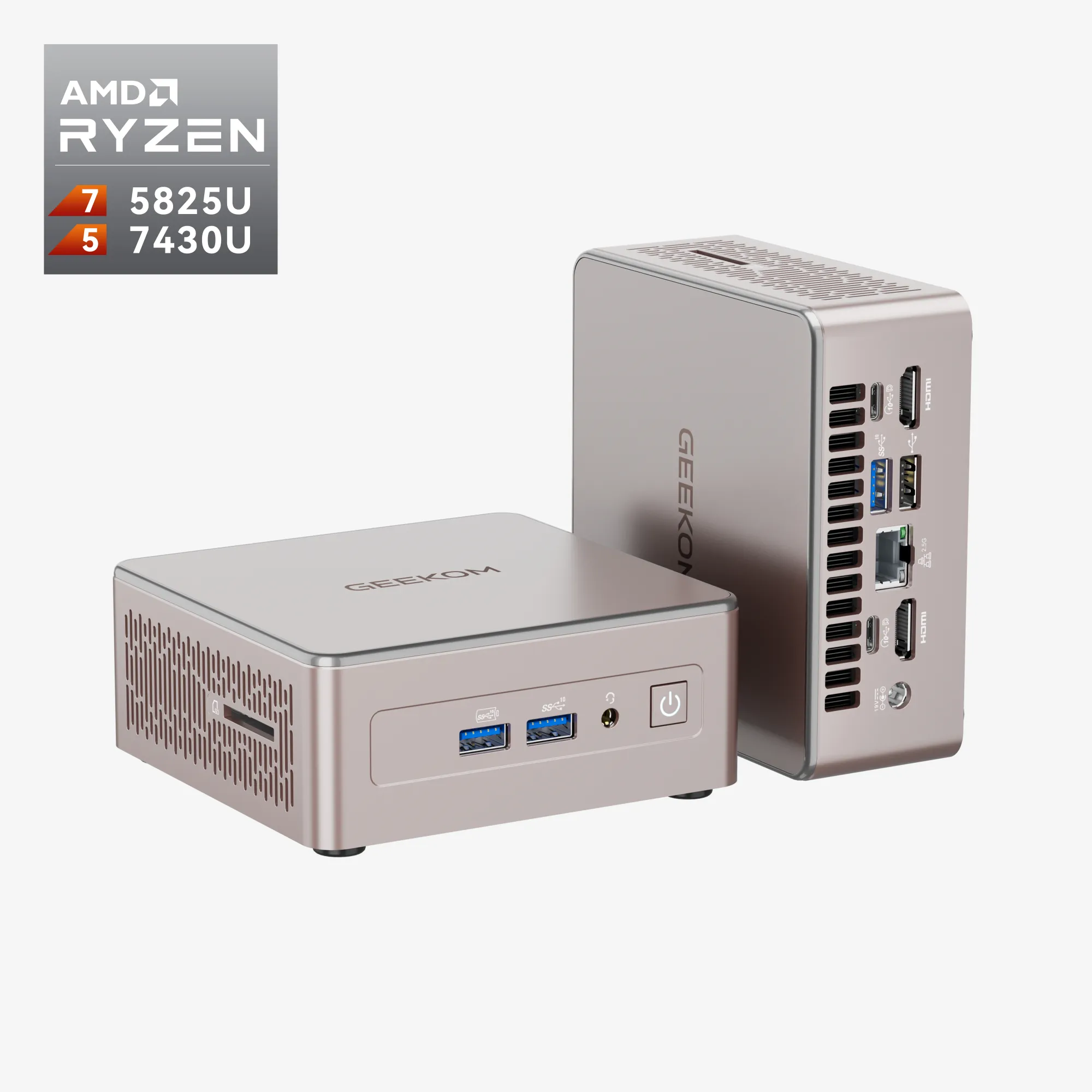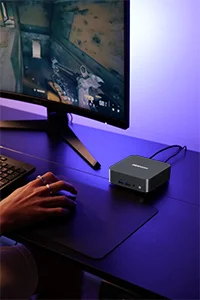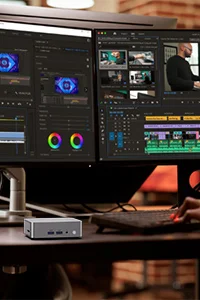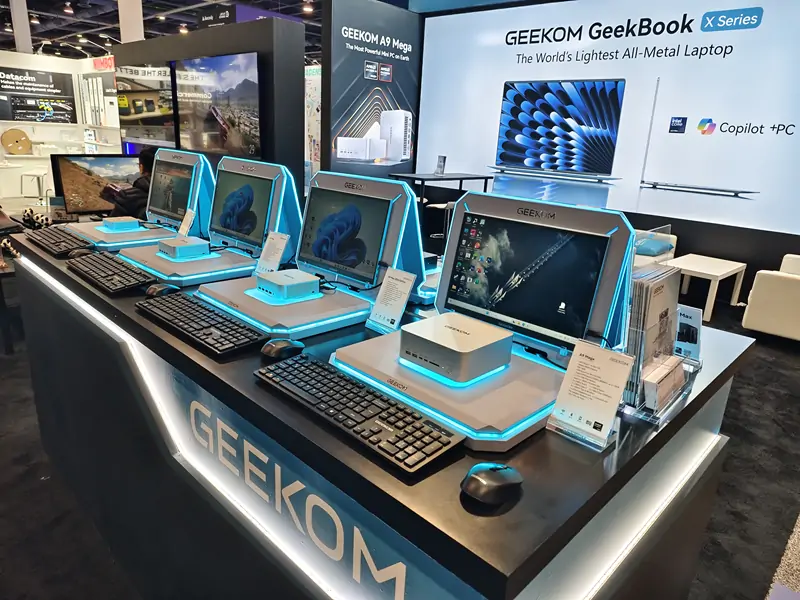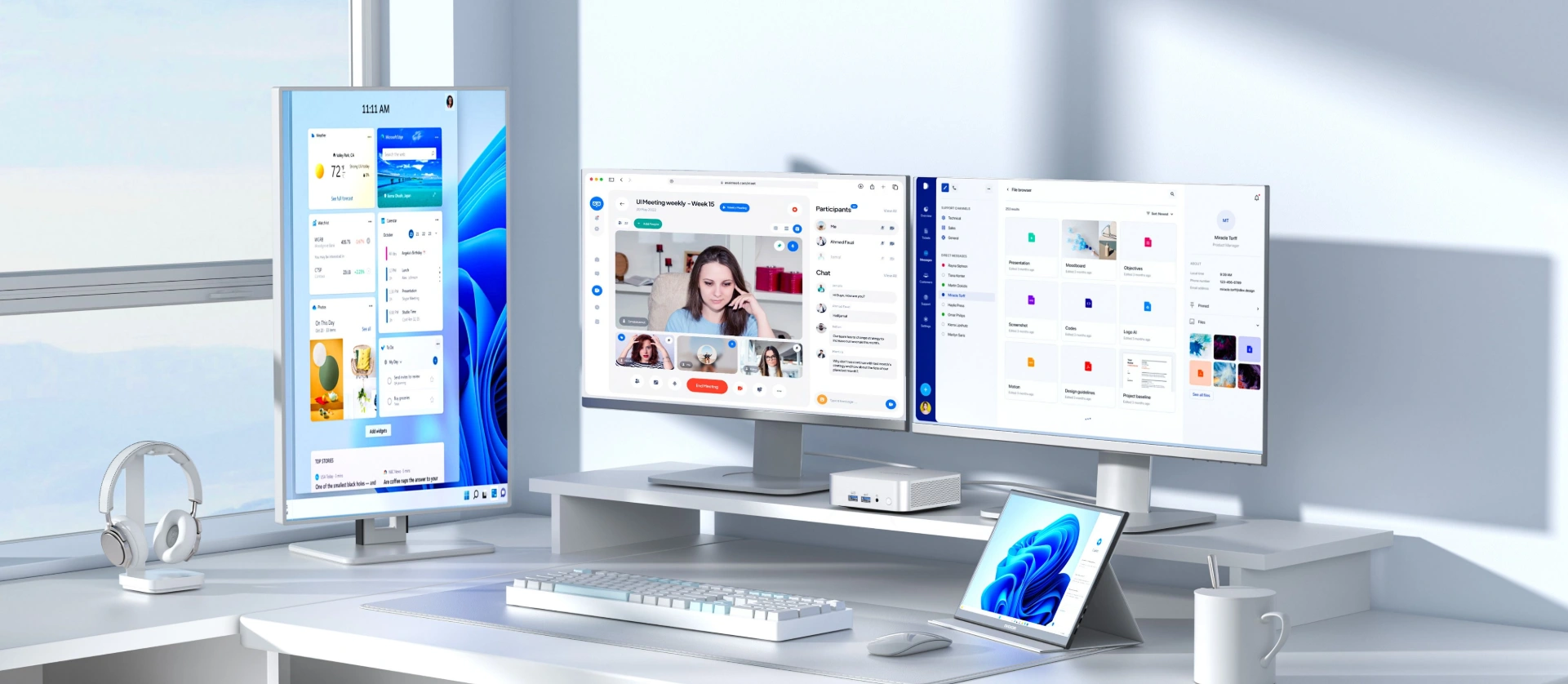Mobility is increasingly important for both work and leisure, which is why mini PCs are spreading through the market like never before. These compact devices are even easier to transport than a laptop and offer extraordinary performance thanks to their high-end hardware: hardware that can also be supplemented with external devices such as an eGPU.
When it comes to connecting these external devices, there are two essential standards: USB 4.0 and OCuLink. Both are very current, but they have different characteristics and apply to different use cases. That’s why we’re going to show you below how OCuLink differs from USB 4.0 and which standard is right for you in each case.
What is USB 4.0?

USB 4.0 is the new USB universal connectivity standard for transferring data between computing devices at high speed. It’s based on Thunderbolt 3, uses a USB-C port, and was launched in 2019. In addition to its high speed—up to 5 GB/s, or 10 GB/s in its USB4 v2 variant—it’s ideal for its compatibility with all types of devices.
- Speed: Up to 5 GB/s, or 10 GB/s in its USB4 v2 variant.
- Port: USB-C.
- Video: Allows video transfer up to 8K.
- Charging: Allows charging up to 100 W.
What is OCuLink?
For its part, OCuLink is an earlier connectivity standard—launched in 2015 and updated in 2017—designed primarily for connecting external PCI devices. It doesn’t allow device charging or video transmission, and has much more limited compatibility because it uses a PCI port instead of USB-C.
- Speed: Up to 4 GB/s in its PCIe 3.0 x4 variant, and 8 GB/s with PCIe 4.0 x4.
- Port: PCI.
- Video: No.
- Charging: No.
👉 More information about: PCIe 4.0 vs 5.0: The Ultimate Guide In 2026
Direct comparison OCuLink vs USB 4.0
Let’s delve a bit deeper into the similarities and differences between these two protocols. To do this, we’ll focus on three fundamental characteristics: performance, versatility, and their general availability in the market. This way, you can better visualise how their respective specifications apply.
Performance and bandwidth
The main advantage of OCuLink is its reduced latency thanks to its direct PCI connection. This minimises latency and maximises connection stability, making it the ideal option for external graphics cards. It’s the perfect connectivity for both gaming and using GPUs for productivity tasks.
USB 4.0, for its part, is limited partly by the USB protocol’s inherent overhead, and it may also have to share its bandwidth between its data transfer, video transfer, and charging functions. This can result in a loss of between 15% and 40% in its transfer speed.
👉 Click to learn more about How to add a GPU to a Mini PC?
Versatility and compatibility
There’s no doubt that USB 4.0 is the data transfer format with the highest compatibility. In this aspect, it surpasses OCuLink in everything. USB 4.0 can transfer video—something OCuLink cannot do—allows device charging—something OCuLink also cannot do—and can be used on any device with USB-C.
OCuLink is a standard that’s focused solely on data transfer and, furthermore, depends on a PCI port for its operation, so its presence in mobiles or tablets is practically non-existent, and it’s not the most common standard in laptops either. Its use is more localised to specific functions in specific devices.
Market availability
The vast majority of laptops and current mini PCs have USB 4.0 ports, and their use continues to spread more and more. It’s an almost universal standard, especially in PCs, and it’s even gradually being deployed in tablets and mobiles. By far, USB 4.0 is a much more widespread standard than OCuLink.
For its part, OCuLink is a much more niche connectivity standard, although it still has great acceptance. OCuLink is quite widely used in gaming PCs, portable consoles, and some mini PCs, especially when connecting peripherals such as storage devices or external graphics cards.
Click and Read More about Types of USB Ports and Their Current Uses
Which option to choose in 2026?
Now that you have a clearer idea of the main characteristics and use cases of USB 4.0 and OCuLink, it will be easier for you to choose between one or the other. The key here is the purpose for which you need your connectivity. Perhaps the most important thing to consider is the contrast between USB 4.0’s versatility and OCuLink’s stability.
🎯 Which Option to Choose in 2026?
Understanding the key differences between USB 4.0’s versatility and OCuLink’s stability will help you make the right choice. The decision depends primarily on your specific connectivity needs and use cases.
When to Use OCuLink?
- External GPUs – Maximize graphics card performance
- High-speed storage – Peripheral storage devices
- Low latency – Minimal overhead for best performance
- Dedicated bandwidth – No protocol overhead
Best for: Professional gaming setups, video editing workstations, and high-performance computing tasks.
When to Use USB 4.0?
- Universal compatibility – Works with most devices
- Video transmission – Display connectivity support
- Power delivery – Charge devices up to 240W
- Data transfer – High-speed despite slight overhead
Best for: General computing, docking stations, multi-purpose connectivity, and everyday peripherals.
When to Use Both?
These standards are not mutually exclusive! A hybrid approach maximizes your device’s potential by leveraging the strengths of each connection type.
- External graphics cards (eGPU)
- Ultra-fast data peripherals
- Performance-critical connections
- Displays and monitors
- Charging and power delivery
- General peripherals and accessories
💡 Pro Tip: Many modern Mini PCs and workstations support both standards, giving you the best of both worlds!
Recommended Mini PCs with USB4 and OCuLink
At Geekom, you have an extensive catalogue of mini PCs that have both OCuLink and USB 4.0 ports to maximise your device’s potential. You now know their differences better and what each is used for, so let’s show you two ideal mini PCs for gaming and productivity, respectively:
GEEKOM MEGAMINI G1 Mini PC
(Note: This product is unavailable in UK.)
If gaming is your thing, the ideal mini PC for you is the Mega Mini G1. It’s an absolute beast equipped with an Intel Core i9-13900H processor with 14 cores and 20 threads, with 32 GB DDR5 5200 MT/s expandable to 64 GB, and a solid NVIDIA GeForce RTX 4060 to offer you excellent graphics from the first minute. Additionally, it has an OCuLink PCIe 4.0 x4 port so you can connect an eGPU if you want to boost those graphics even more.
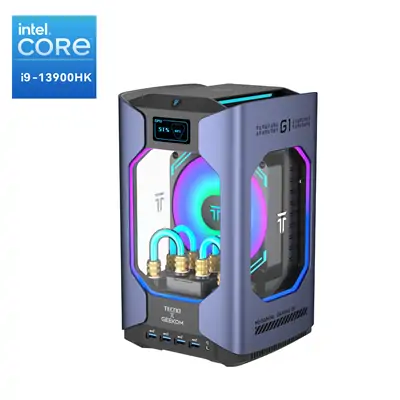
- Processor: Intel Core i9-13900H or i7-13620H.
- RAM: 32 GB DDR5 5200 MT/s, expandable to 64 GB.
- Storage: 2 TB M.2 NVMe PCIe Gen 4 x4 SSD (2 M.2 slots: 1x 2280 NVMe up to 2 TB, 1x 2242 SATA up to 1 TB)
- Graphics card: NVIDIA GeForce RTX 4060 (8 GB, laptop model)
- USB 4.0: 1 USB 4.0 Type-C port, up to 40 Gbps.
- OCuLink: 1 OCuLink port (PCIe 4.0 x4, up to 64 Gbps).
- Price: From €1,499 to €1,799.
GEEKOM IT15 Mini PC
On the other hand, if you plan to use your mini PC mainly for productivity tasks with applications like Adobe Premiere or After Effects, then you’ll probably prefer the Geekom IT15. This mini PC comes in two variants, one with an Intel Core Ultra 9-285H with 16 cores and 22 threads, and another with the Ultra 5-225H with 14 cores and 18 threads. Its price range is between £729 and £979, much more affordable.
- Powerful computing power: Intel® Core™ Ultra 9-285H processor and Intel® Arc™ 140T graphics, delivering up to 99 TOPS of AI computing power
- High-speed connection: 2.5G Ethernet port, intel® Bluetooth® 5.4 and Wi-Fi 7
- Versatile USB4: All-in-one – Up to 40Gbps data transfer, 8K video output, connecting an eGPU or external SSD, fast charging, all with a single USB-C cable. More convenient and versatile than OCuLink, no complicated setup or special cables required.
- Advanced cooling technology: Innovative and efficient cooling system – IceBlast 2.0
- 339 rigorous tests:Tested through 339 rigorous tests, it has over five years of stable operation.
- VESA compatible : New lockable VESA mount securely attaches to surfaces and offers expanded usage scenarios.
Conclusion
The differences between OCuLink and USB 4.0 are clear then, as are their use cases. Thanks to its low latency and minimal overhead, OCuLink is the ideal protocol for connecting your eGPU and maximising your mini PC’s graphics capability. This also makes it excellent for connecting external SSDs, although it’s a less versatile protocol than USB 4.0, so it ceases to be the ideal option for other uses.
The greater versatility of USB 4.0 makes it an indispensable option for charging devices, transmitting video, and transferring data with USB or mobile devices, so it perfectly complements OCuLink. If you want to maximise your mini PC’s performance, it’s best to have both protocols and use them in their respective ideal use cases. With Geekom, you have excellent options to do so!




